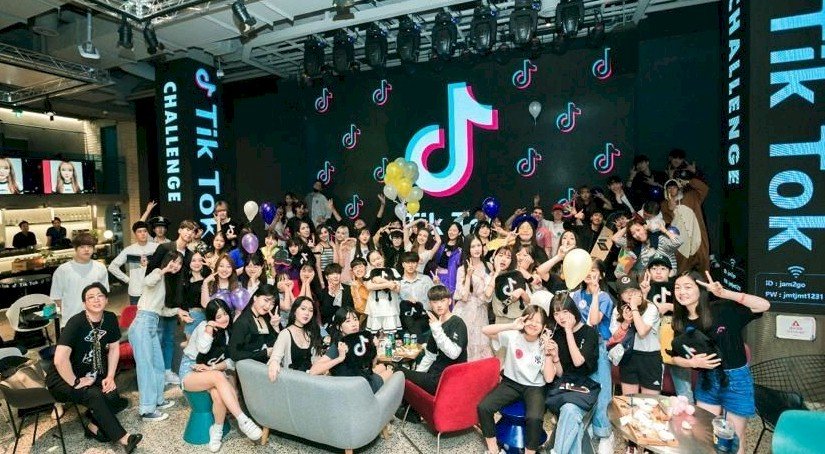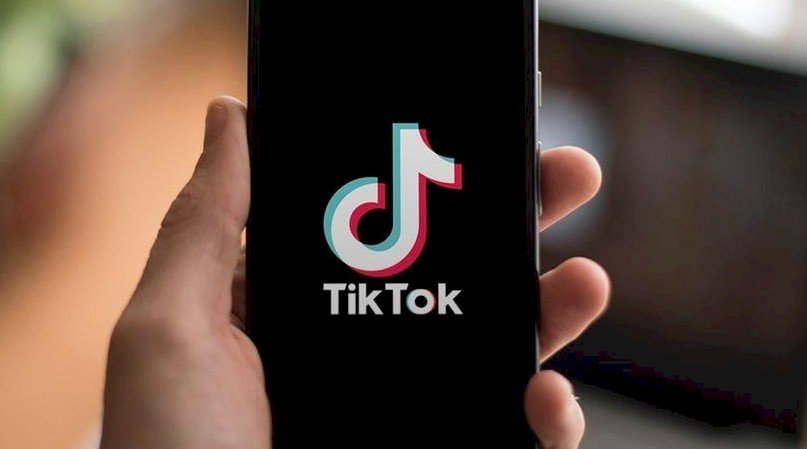Let’ take a look at the TikTok logo and the history behind the company.
TikTok has become one of the fastest-growing apps in the world. The Tik Tok logo and brand is now recognized by millions of people all over the world.
In September of 2016, TikTok blasted onto the social media scene, quickly growing to become an international hit and a platform capable of competing with social media giants such as Facebook, Twitter, and Snapchat. Despite its late entrance into the arena, TikTok has demonstrated a lot of staying power over the past few years and has carved out a large, loyal audience in an area where so many social media apps before it have failed. Today, TikTok is valued at over $100 billion dollars and boasts an incredible 1.5 billion active monthly users. To understand how this app was able to so quickly rise to such prominent levels of popularity and profitability, we’ll take a look at the short but rich history of TikTok and the role that the company’s recognizable logo has played in its international success.
The Origins and History of TikTok
Tik Tok was first brought to the Chinese market in September 2016, launching as a video sharing app under the name A.me before being renamed Douyin three months later in December. The app was released by the company ByteDance, which is led by Chinese internet entrepreneur and app developer Zhang Yiming. Though originally released only to the Chinese market, Yiming had plans from the very beginning to bring Douyin to users across the globe. Within a year of its release and after taking only 200 days to develop, Douyin boasted over 100 million Chinese users that viewed an average of one billion videos on the app every single day. Fueled by this high degree of rapid success, Douyin was brought to the international market in September 2017 and was renamed TikTok.
By January of 2018, TikTok had become the number one most downloaded app in numerous countries, making it one of the most promising new trends in social media. While the app was able to attract a lot of interest and attention right from the start, much of TikTok’s success can be attributed to a decision that the app’s parent company made in 2017. For the substantial price of one billion dollars, ByteDance purchased the social media video platform Music.ly in September of 2017 right before taking TikTok to the international market. Music.ly was an app that allowed users to create short lip-sync and comedy videos, and TikTok’s integration with Music.ly gave rise to the app that the world now knows today. By August 2018, Tik Tok was fully integrated with Music.ly, and existing accounts on Music.ly were consolidated into the TikTok app. Thanks to Music.ly’s large and enthusiastic base of young users, TikTok’s integration with Music.ly allowed the app to quickly become a social media sensation among Millennials and Generation Z.
In 2019, TikTok landed its first major promotional partnership in the United States by agreeing to a deal with the National Football League. The partnership saw TikTok hosting fan activities and events in honor of the NFL’s 100th season as well as the launch of an official TikTok NFL account. Today, Tik Tok enjoys partnerships with a vast number of major companies and celebrities in the United States and across the world. 
This rapid rise to international popularity has enabled TikTok to enjoy a staggering degree of financial success. By 2018, TikTok was the number one most downloaded app on the Apple App Store across the world. That same year, the app boasted a total $7.4 billion in revenue before going on to more than double that amount in 2019.
During this rise to becoming one of the most well known social media platforms in the world today, TikTok has endured its fair share of controversy. By and large, most of the controversy surrounding TikTok has been about the fact that its users are largely anonymous, which has led to a concerning amount of cyberbullying on the app. In December of 2019, German digital rights group Netzpolitik.org released a report accusing TikTok of suppressing videos by disabled users and LGBTQ users. TikTok admitted that these accusations were true and admitted to telling moderators to likewise suppress videos that featured people with an “abnormal body shape” or “ugly facial looks” in an attempt to reduce cyberbullying on the app. In addition to being a platform ripe for cyberbullying, TikTok has also come under scrutiny for being too addictive for its young users, and in 2018 the company released an addiction-reduction feature on the app that would encourage users to take a break if they have been on the app for an extended amount of time. Lastly, TikTok has even been criticized for potentially being a national security concern for the United States given that fact that the Chinese company who owns the app would be legally required to share its vast amount of data on American users if the Chinese government demanded that they do so.
Despite these controversies, though, TikTok remains an extraordinarily popular and profitable platform. Like most social media apps, TikTok makes a lot of its revenue by advertising to its users on the platform. However, TikTok has created another revenue stream not found on social media sites such as Facebook and Twitter that is actually the app’s primary source of income. On TikTok, users are able to purchase coins within the app that they can then gift to their favorite content creators. The creators can then exchange these coins for a variety of digital gifts and payouts, leaving the company to profit off of the difference between the price of the coins that users purchase and the price of the payouts that are awarded to content creators. This unique business model is largely to thank for TikTok’s incredible revenues and is a big part of the reason why the app has succeeded in an industry where so many apps like it have failed to ever gain a large user base and turn a profit.
While TikTok’s unique platform and even more unique revenue stream have certainly been the primary driving forces behind the app’s success, TikTok’s internationally recognizable logo has certainly helped play a role in the app’s rise to worldwide prominence as well.
The History of TikTok’s Logo Design
Today, it is more common for companies to dramatically change their logos over the years than it is for a company to stick with their original logo design. With that said, though, the TikTok symbol is the exception to this rule. Today, TikTok still makes use of essentially the same logo symbol that they designed when the app was first released in 2016, with the design having undergone only minor revisions since then.
The TikTok logo design was created by an unnamed designer who is said by TikTok to have been inspired by a concert that he attended before being brought on to design the logo. The designer reportedly wanted to create a design that would emulate the excitement of attending a major concert in order to highlight the talented content creators on the app and showcase the entertainment value that they are offering. The design features the letter “d” modeled in the shape of a musical note, representing at the time the fact that the app was named Douyin. Despite the fact that the app’s name was changed to TikTok when it was released internationally, the company still kept this same design.
While most users don’t realize that the “d” in the TikTok logo design was meant to symbolize the app’s original name, the design is nevertheless recognizable all over the world and has played a key role in TikTok’s marketing.
Design Elements of the TikTok Logo
The unnamed designer responsible for creating the TikTok logo was, according to TikTok, “a young man who loves attending concerts, especially rock concerts”. His inspiration for the design supposedly came from a desire to emulate the experience of a concert goer who is surrounded by darkness, looking up at a bright and colorful stage. 
To create this experience, the designer chose a black background for the logo then added a colorful electronic wave effect to give the design more of a three-dimensional look. The bright neon blue and red colors that he used for this effect are similar to the neon lights that you would see at a concert.
Choosing a musical note for the basis of the design was an obvious choice given TikTok’s musical nature, and choosing a note that looks like the letter “d” was an intentional nod to the app’s original name.
What is the Importance of the TikTok Logo?
If you were to ask a marketing or mobile application expert about the secret behind TikTok’s rapid rise in popularity, the app’s logo probably wouldn’t be the first thing that they bring up. Nevertheless, logos play a few important roles for mobile applications, and TikTok is no exception.
For one, it is essential for an app to have a recognizable and eye-catching logo that can be used as a thumbnail for the app on the phone’s home screen. The more a person uses the TikTok app, the more money TikTok makes. By ensuring that the app’s thumbnail stands out and is easy to spot, TikTok is able to further incentivize its users to notice and open up the app when they are on their phone.
Of course, the TikTok logo has also played a prominent role in the app’s digital marketing efforts as well. Almost every ad that TikTok has released over the years has featured the app’s logo in some form or another. While the logo may not be the reason someone downloads the app, it is a recognizable symbol that TikTok is able to use as a focal point for the ads that they create.
Lastly, TikTok has certainly capitalized on their unique logo when it comes to creating licensed products as well. Today, products that feature the TikTok logo span from apparel such as shirts, shorts, and hoodies, to items such as coffee mugs, journals, and beyond. By licensing their logo for products such as this, TikTok has been able to even further diversify the app’s revenue stream.
All things considered, it is safe to say that TikTok’s eye-catching logo design has absolutely played an undeniable role in helping make the app as popular and profitable as it is today. If you are developing a mobile application that you hope will become the next international hit, be sure to keep in mind the many benefits that a great logo can provide.
At LogoMyWay, we empower mobile app developers and business owners of all kinds to create the perfect logo for their brand through tools such as our acclaimed logo design contest and our comprehensive DIY online logo maker. If you would like to learn more about how we can help you design a logo that will help put your app or business on the map, feel free to contact us today!







